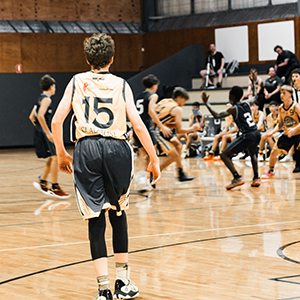A New Zealand study using GPS devices to follow teenagers has found that those who spend more of their spare time in “healthy” areas are more likely to be physically active.

University of Canterbury Faculty of Health Senior Lecturer Matt Hobbs has used GPS to find out where teenagers spend their time and how it affects their physical activity levels.
Sustainable Development Goal (SDG) 11 – Sustainable Cities and Communities
The University of Canterbury-led research measured where almost 200 high school students in Auckland and Wellington went over a two-week period by fitting the participants with a wearable global positioning system (GPS) device. This was combined with an accelerometer which measured their movement and activity patterns.
The results were combined with environmental data to find out what features the participants were near; such as green spaces (parks and recreation centres), dairies, conveniences stores or takeaway outlets. The study aimed to find out how spending time in different areas affected the teenagers’ levels of physical activity and sedentary time.
Lead researcher Dr Matthew Hobbs, a Senior Lecturer in the University of Canterbury (UC) Faculty of Health and Co-Director of the GeoHealth Laboratory, says a key finding is that the more time the adolescents spent in areas with access to health-promoting features, the less time they spent sedentary or travelling by car.
“We found the environment does seem to have an impact on adolescent behaviour, particularly their activity levels,” he says. “This is significant because we know that increased physical activity in adolescence is linked to higher academic achievement as well as more positive long-term health outcomes.”
The research was carried out in collaboration with Auckland University of Technology and has been published in the international journal Health & Place. It is one of the first to use GPS data to track adolescents combined with a comprehensive measure of the type of environment they are spending their spare time in. “We know that adolescence is where young people tend to get more independence and are very mobile, so this is a more accurate way of investigating where they are choosing to hang out,” Dr Hobbs says.
Previously there has been limited research conducted on the environmental risks to adolescent health, however they are a priority group because they are at an important life stage, he says.
“In recent decades the environments where children and teens live and play have changed substantially, including having, for instance, a higher number of fast-food restaurants in some areas.
“We need a greater understanding of how access to these features is affecting health behaviours and health outcomes, particularly because adverse environments are often more prevalent in the most deprived areas of Aotearoa New Zealand.”
He says adolescence is often associated with a decrease in physical activity and a rise in sedentary behaviour.
“It is likely that environmental factors play some part in this trend. I think the important aspects are whether teenagers can walk to school, do they have safe places to play with friends, what’s the traffic density like and how connected are the streets. It’s about having more neighbourhoods that promote physical activity.”
The study used environmental data from The Healthy Location Index, developed by a team of researchers, including Dr Hobbs and Spatial Data Scientist Dr Lukas Marek at UC’s GeoHealth Laboratory. The Healthy Location Index classifies areas of Aotearoa New Zealand based on how healthy or unhealthy the neighbourhood is.
Overall, the participants in the new study spent most of their measured time in the school domain (4.8 hours per day), closely followed by home (4.3 hours a day), and other areas (2.3 hours per day). More time was spent travelling in a motor vehicle (31 minutes per day) compared to pedestrianised travel (23 minutes per day), and more time was spent sedentary, compared to light or moderate intensity exercise.
As the proportion of time spent in areas with greater access to health-promoting features increased, the amount of sedentary time and travel in a vehicle fell.









